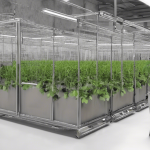Product Lifecycle Management (PLM) offers more than streamlined development; it creates a dynamic framework that strengthens cybersecurity by integrating secure processes from design to disposal. Embedding security considerations throughout each stage reduces vulnerabilities and protects intellectual property, helping businesses safeguard products in an increasingly connected and risky environment. This approach ensures resilience without sacrificing innovation or speed.
Comprehensive Overview of Product Lifecycle Management and Its Role in Cybersecurity
You can view more details on this page: Click to access.
Also to see : Exploring the impact of emerging technologies on the future of tech in the uk
Product Lifecycle Management (PLM) represents an integrated, systematic approach that guides a product from initial concept, through design and manufacturing, to support and retirement. This holistic process intertwines people, data, processes, and technology, all aimed at maximizing product value and minimizing costs throughout each stage of the journey.
PLM consists of major stages: ideation and market research, design and prototyping, production and quality assurance, marketing and sales, customer support, and end-of-life activities like recycling or disposal. By leveraging product lifecycle software solutions, organizations monitor and coordinate these distinct phases within one digital ecosystem, enhancing both collaboration and visibility.
Additional reading : Exploring the uk’s strategic investments in the future of blockchain technology
A key advantage of PLM is the facilitation of lifecycle risk management in products. Embedding security requirements during the design stage proactively strengthens a company’s cyber defense strategy. With every step—from supplier selection through software updates—PLM platforms help maintain data traceability and documentation, making compliance and recall management far more effective. Organizations improve their odds against cyber threats by ensuring software patches, tracking supplier reliability, and managing product retirements securely.
Integrating cybersecurity within PLM tools supports auditing, access controls, and robust document histories, fostering accountability. Employing product lifecycle management best practices—such as automating certifications and actively managing vulnerabilities—builds resilience while allowing product teams to focus on continuous innovation instead of reactive firefighting.
Stages, Software Solutions, and Data Integration in PLM
Distinct phases of the product lifecycle and their strategic importance
Precision: The stages of product lifecycle—concept, design, production, sales, support, and retirement—each demand tailored strategies and data flows to maximize value, minimize risk, and respond dynamically to changing markets. During the concept phase, market opportunity is assessed; in the design and production stages, PLM software for manufacturing coordinates collaboration and documentation. As products reach maturity, lifecycle management tools facilitate efficient support and eventual phase-out, aiding in smooth transitions between lifecycle stages with real-world examples drawn from manufacturing, retail, and regulated industries.
Review and comparison of leading PLM software, cloud-based, and SaaS solutions
Current product lifecycle software solutions address diverse requirements, from agile PLM software applications for rapid innovation to robust PLM systems comparison frameworks for organizations needing scalable, integrated platforms across global operations. Cloud-based lifecycle management ensures that data is accessible, secure, and supports distributed teams, while SaaS lifecycle management software can reduce infrastructure costs and enable flexible product lifecycle management frameworks.
Role of integrated data management in enabling secure and efficient workflows across the lifecycle
Effective product data management integration removes silos by consolidating information into a single digital product lifecycle repository. This enables real-time collaboration, advances lifecycle management in supply chain, and supports product lifecycle analytics and insights. Increased PLM software scalability enables organizations to adapt as they grow, ensuring seamless transitions between stages in product development lifecycle, and maintaining robust lifecycle management methodology for ongoing innovation and compliance.
Best practices, emerging trends, and cybersecurity in PLM-driven product development
Industry-validated best practices for implementing and optimising PLM with a focus on cybersecurity
Precision and recall in lifecycle risk management in products depend on embedding cybersecurity from the earliest product lifecycle management stages. PLM implementation best practices now require integrating lifecycle data security features through every workflow step, from concept to retirement. This secure lifecycle process automation ensures threats are addressed before they escalate. Companies should prioritize encrypted collaboration, regular system audits, and role-based access to sensitive product data to sustain robust security.
To strengthen lifecycle risk management in products, organizations increasingly leverage digital transformation in PLM. Adopting advanced PLM tools allows for real-time, cross-functional data tracking and threat detection. These product lifecycle management best practices streamline compliance, automating incident logging and security certification renewals.
Technology advancements shaping PLM: AI, IoT, digital twins, and their impact on secure product lifecycle management
Emerging trends in product lifecycle management focus on digital twin technology in lifecycle management. By creating virtual replicas and connecting them with IoT sensors, organizations monitor real-world security events instantly. AI-driven product lifecycle management best practices also identify anomalies, automating risk mitigation. As digital transformation in PLM matures, attention to lifecycle data security features will remain indispensable for future-ready, resilient products.







